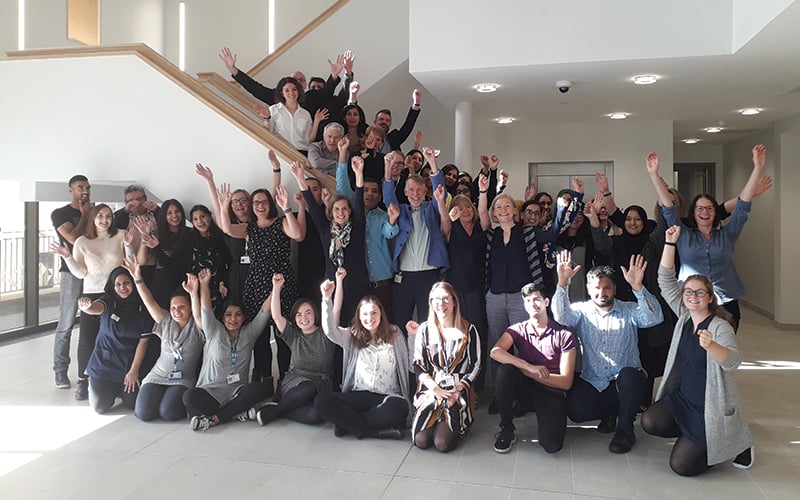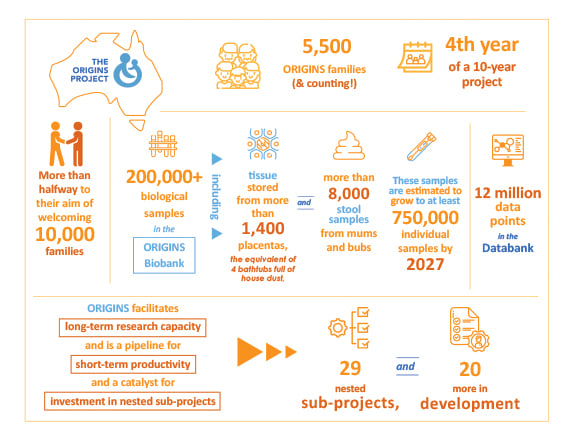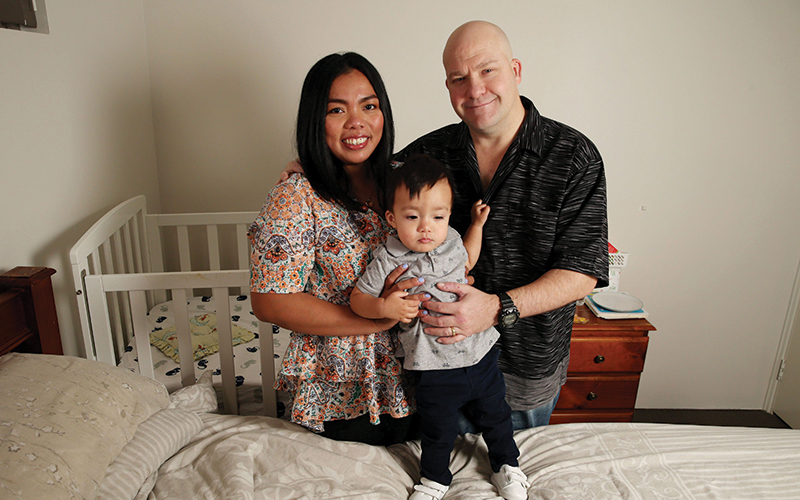
Born in Bradford UK team
Researchers leading WA’s landmark ORIGINS Project – a collaboration between The Kids Research Institute Australia and Joondalup Health Campus – have spearheaded a global network that will see them join forces with similar interventional cohort studies across the world to maximise data collection and learnings for all.
Now in its fourth year, The ORIGINS Project has more than 5,500 families involved in the study and is making steady progress in its bid to better understand how to optimise the early environment – providing crucial insights expected to boost the health and quality of life of the next generation.
ORIGINS researchers will follow 10,000 families over a decade, undertaking repeated observational measures, collecting biological samples and testing interventions from pregnancy through to early childhood.
Across Australia and around the world, other researchers are similarly following local populations – each running interventional cohort studies that explore different research themes over time.
Now, eager to learn from these similar studies and harmonise data collection in a way that benefits everyone, ORIGINS has established the Interventional Cohort Network so the different groups can share what they have learned.
ORIGINS Senior Program Manager Jackie Davis, who facilitates the network, said building on existing relationships just made sense.

The network – which evolved from the work of ORIGINS Co-Director Professor Susan Prescott, who works with multiple international organisations – currently consists of four projects: ORIGINS, GenV in Victoria, BestSTART SWS in New South Wales, and Born in Bradford (BiB) in the United Kingdom.
Despite plans for an inaugural meeting in Amsterdam being thwarted by COVID-19, the group has held virtual meetings and has already prioritised what they hope to achieve in collaboration.
Ms Davis said the group had begun by comparing their methodologies – aspects that were working well and others that were challenging – and discussing potential future collaborations, with a particular focus on embedding interventions for disadvantaged populations within cohorts.
The network is also looking at key measures they can collect across the different cohorts which can then be analysed for comparison, establishing similarities and differences; and discussing multi-site interventions and how they can be adapted to the needs of each community.
“An overarching key focus of the network is to discuss how to best translate the research that is coming out of the studies to ensure it is valuable and relevant,” Ms Davis said.
“The biggest challenge for interventional cohorts is in the methodology of proving cause and effect. When you’re actually intervening with the cohort by having them involved in the study, it is difficult to identify the exact influence on health outcomes. We are testing things in the real world with real-life impacts and influential factors, and these factors vary enormously globally.”
Ms Davis said it was a different way of looking at research.
“We’re all in agreement within the network that, while our studies are not purely observational, ultimately the kids benefit regardless of the research outcomes and findings and that is what we are all hoping to achieve,” she said.
Ms Davis said the collaborative nature of the network – including the way it harmonised data collection and provided a valuable resource of long-term data on the health and wellbeing of families – opened the way for the different cohort studies to identify and answer new health challenges.

“Importantly, this ability to monitor in realtime can indicate critical opportunities and ways to intervene to prevent future health problems in subsequent generations.”
Ms Davis said that although ORIGINS was a community project, its ultimate goal was to address the rising global burden of non-communicable diseases.
“Collaboration nationally and internationally will enable harmonisation of multiple data collections and testing of interventions in different population groups,” she said.
What's next
- The Network meets quarterly and hopes to eventually gather in person
- A key goal over the next 12 months is to introduce a new nested sub-project into several sites, using the same variables applied to each cohort. The projects will then match data collection and compare outcomes within the differing populations
- The group is also planning to develop a manuscript outlining their work, findings and
comparative data


